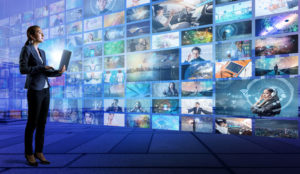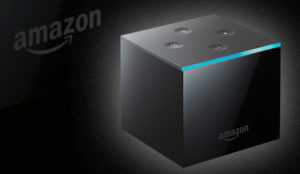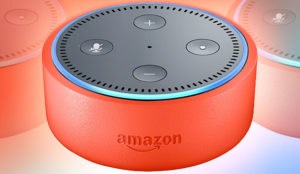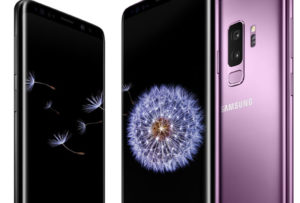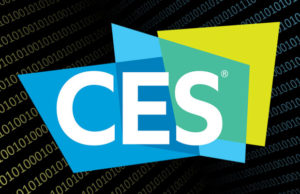
Wearable technology and other devices, objects and systems connected to the Internet will be fully pervasive in our society by 2025, according to a new report.
The Internet of Things, or IoT, references the many objects in our everyday lives that are connected to the Internet and share data. While the trend already is taking effect through products like wearable fitness technology and smartphone-controlled light bulbs, it will have a much more widespread impact on our lives in a decade’s time, according to the Pew Research Center.
As the IoT grows, however, there may be both major positives and negatives for society and manufacturers.
“The potential on the positive side is that we could be safer with faster identification and response to threats, a better understanding of our environment, and more convenience — with much more technology much more responsive to our needs,” Rob Enderle, principal at the Enderle Group, told TechNewsWorld.
“On the downside, the opportunity for misuse and public embarrassment or damage increases just as much,” he said.
“You’ll effectively be tracked every moment from birth to death, and become far more dependent on technology which could be used against you by a variety of legitimate and illegal entities,” Enderle predicted.
‘Quality of Life’
“What IoT should do is use technology to improve efficiency and quality of life, like most technology,” said Jim McGregor, principal at Tirias Research.
“However, the term and concept have grown so large that it incorporates pretty much everything related to technology. The best way to think about IoT is as a new network structure that has the ability to connect almost anything — from sensors to devices and even people. However, with the vision comes natural concerns about privacy and security,” he told TechNewsWorld.
Around 83 percent of the 1,600 industry experts Pew interviewed expected that the trend would thrive in the mainstream by 2025, but progress would be slow in reaching that point.
Wearable technology is among the main categories the experts expected to thrive, but Internet of Things functions in the home — where consumers would control things like sprinklers and laundry machines remotely — also were expected to grow in prevalence.
While many people have Internet-connected devices in our homes, such as a Nest thermostat, there are still key obstacles that prevent Internet-connected devices from becoming more common, according to the report.
Among them is the fact that each manufacturer tends to use its own proprietary technology, which hampers the devices from communicating with each other and across different platforms. Companies should work together to make their products more compatible so that, say, a consumer can control all of their IoT devices using a single interface, the report suggests.
Communities likely will start including information on pollution levels, transportation and infrastructure in smartphone apps and embedded devices, some contributors to the report observed. Smart systems potentially could deliver water and electricity more efficiently.
Real-Time Readings
The IoT is likely to impact goods and services, with factories and supply chains having sensors and readers to more precisely track materials, the report foresees. This could speed up and smooth the manufacturing and distribution process. Meanwhile, the environment is seen as a key growth area, with IoT devices providing real-time readings on pollution levels, soil moisture, and resource extraction in fields, forests, oceans and urban areas.
However, the growth of the IoT gave some of the experts cause to worry. One of the key themes of the report is concern over privacy and consumers’ ability to control their own lives. The data generated from IoT devices may be monitored and used to grow the level of profiling and targeting, while boosting political, social and economic trouble, the report notes.
“Privacy and security are sticking issues,” agreed Tirias’ McGregor, but perhaps not as difficult to overcome as some fear.
“Obviously, privacy of personal information is and will continue to be important, but beyond that, privacy may prove to be less of an issue than many make it out to be,” he said.
“Privacy concerns are often more of a cultural and generational concern. The teens and twenties that are part of the social networking generation really aren’t as concerned about privacy. As a result, I think many of the privacy concerns beyond critical information will fade with changes in society,” McGregor explained.
“Security, however, becomes a much greater issue,” he continued. “If everything in your life is connected — from your home to your car, to possibly even the things your carry or wear — security becomes a critical issue to ensure unwanted eyes do not have access to that information or those resources. IoT may finally force the electronics industry to adopt and implement more stringent hardware and software standards.”
Repair Issues
Concerns that people may not know how to fix devices when they break also figured prominently in the report, with some contributors pointing to the complexity of a vast network turning into a system that will be too challenging to maintain and evolve well. That could cause severe problems if, say, a water supply system were damaged and people did not know how to repair it.
On the other hand, an expanding IoT and its integration with people and organizations may lead to a reform in peoples’ relationships with each other and with groups, the report suggests.
What would happen if the Internet were to fail, given that it is the infrastructure on which IoT devices rely? Should the Internet collapse, devices lacking manual controls might be rendered useless.
“The network is already a significant point of failure for many critical services, and its failure would be catastrophic,” Enderle said.
“This potential for damage will increase significantly, but this is somewhat offset by efforts to make it more robust. The electrical grid is actually a bigger exposure now, and the two things are increasingly connected where if one failed it would take out the other,” he pointed out.
“In reality, the Internet cannot fail,” McGregor said. “The Internet has grown so large and incorporates so many nodes and networks that there really is no single point that could bring down the Internet. Because of its sheer breadth, the Internet is the most reliable network available — and much more reliable than the U.S. electrical grid that was built around the concept of reliability.”


